What is the best location for a beehive? What direction should a beehive face?
LOCATION OF THE HIVE
Where are you going to locate your hives? The roof. Why not? City people have kept them on roof tops for years. The back yard. Certainly. The garden grounds. Most assuredly. An orchard or vineyard. Ideal.Which way should a beehive face?
Have them face in a southerly direction; and if your nautical eye goes a little adrift and lands the hive entrance southeast, or southwest, that too will be acceptable. A general southerly line throws the front of the hive into the heatgiving and lightgiving power of the sun and influences bee home economics as greatly as southern exposure does the rental rolls on a fashionable avenue. The inviolable laws of celestial motion touch even apiculture.Can beehives be in direct sunlight
But be mindful of the adverse possibilities of this solar force. We all know in a general way the effect of a warm summer sun on rows of city tenements. The inner rooms and hallways are stifling. There are some fatalities and considerable collapse. All work ceases. The occupants pour out into the streets and into the parks for relief. A hive in the direct sun has the same mass psychology. Work stops. Thousands of bees pour out of the sweltering interior and cluster on its front. The wax comb inside begins to sag, and drip and melt.The result points its own solution. A hive needs sunlight tempered with shade. Toward this end, some locate their hives in an orchard, under the younger trees. Or under the shade of an overhead trellis with straw, or dry grass, or climbing plants, or shade boards.
In their most elementary form shade boards are simple flat covers,thrown across the top of the hive, and extending out about a foot beyond each wall except the north wall.
Wind breaks and snow breaks are also essential considerations in location. Trees, hedges, shrubbery or brush are all natural aids. The contour of the land and the incline of the background all serve to control or modify the prevailing winds.
The final objective is a spot free from interfering breezes in summer and cold winds in spring and winter. The former disquiet the bees and make them unruly during manipulation. They are an additional burden to other working problems. The latter penetrate the thin wood of the hive, chill and kill the brood, delay spring development, and exhaust the energy.
If the proposed location has no natural wind break, plant one. A line of evergreens is practical and appealing to the eye; others are wild viburnums, hazelnut bushes, willow and white dogwood. There are the barberries, bush honeysuckle, rose of sharon, forsythia, lilac tamarix, mock orange, clethra and weigela. Consult your gardening manuals for other ideas that appeal to your sense of decoration.
Do not, however, select a solid line fence, though a picket fence with spacings is not objectionable. When the winds strike against a solid obstacle they are deflected upward. There they meet other winds and are immediately blown down again, thus striking with double force on the hives behind the initial barrier.
Trees and shrubs have additional advantages. They are landmarks that help the bees identify their hive. Toward that end let them be individual and characteristic. Further, they accustom the bees to the presence about the hives of upright objects. The occasional presence of the beekeeper therefore does not arouse so much concern. They do not follow him about irritably, buzzing their annoyance or fears. I have always maintained that a totem-pole in the apiary would be an excellent conditioner for easy hive manipulation. The beekeeper, generally unshaven, frequently veiled, and otherwise startling in style, would gain in bee appeal by comparison.
If you must crowd many hives into a limited area, do something to make each one as different as possible from the other. Use different colors and designs at the entrances. Vary the spacings and directions. Plant stones or other objects with definite and different contours; and in a manner that ties each in with a different hive. Hives that are too close to each other do not leave room for good manipulation. While handling one colony the beekeeper is in danger of disturbing and being stung by the bees of the next. Every hive should be isolated at least to the point where the beekeeper with his equipment can pass around it without brushing against the next. A reasonable minimum is six foot. Further, this space about the hive, and particularly in front of it, should be free from grass and weeds. Bees striking against such undergrowth wear out their wings. Keep it down with boards, or sickle and shears, or discourage it with chemicals. Salt is often effective.
Where Should I Put My Beehive?
The following considerations must also be kept in mind:
Don’t locate the hives in a field with horses or cattle. The animals will be seriously stung, perhaps fatally, and hives will be knocked over.
Don’t locate the hives on top of a long or sharp hill. It makes servicing and manipulation difficult for the beekeeper.
Don’t locate the hives along a public highway. Vehicles and passers by, in the line of flight, will complain, and perhaps go further. If you have no other possible location, then deflect the line of flight up and well over the highway, by setting a hedge or fence of the necessary height in front of the hives.
Don’t locate the hives near your neighbor’s clothes line. She will have a few paragraphs about bee stings, and chapters on the condition of her clothes. You will have a laundry bill.
Don’t locate the hives on a slope, in the path of drainage runs; and if you are in a moist region, make sure to provide for drainage away from the location you select. Put a one-inch wedge under the back end of the hive so that it leans slightly forward. In this way rains that blow in during a storm will then flow out again.
Above all, remember that it is not profitable to immerse yourself in a consideration of the pros and cons to a point where you do nothing but vacillate between conflicting decisions. You will learn, even from mistakes.



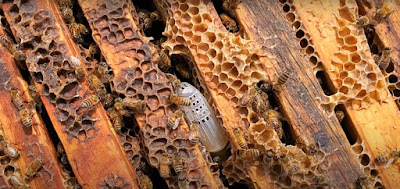
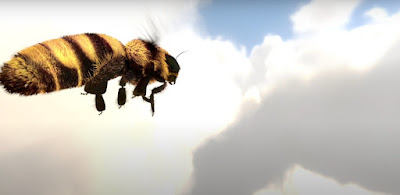

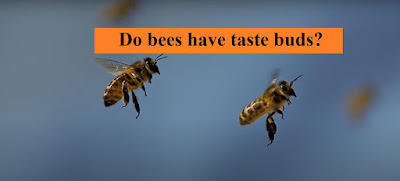
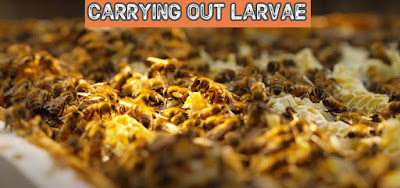
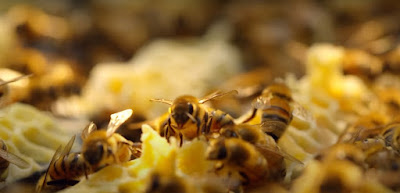

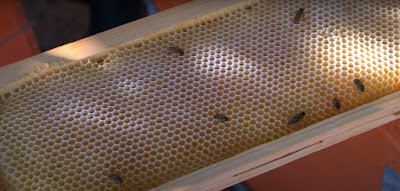


Comments
Post a Comment